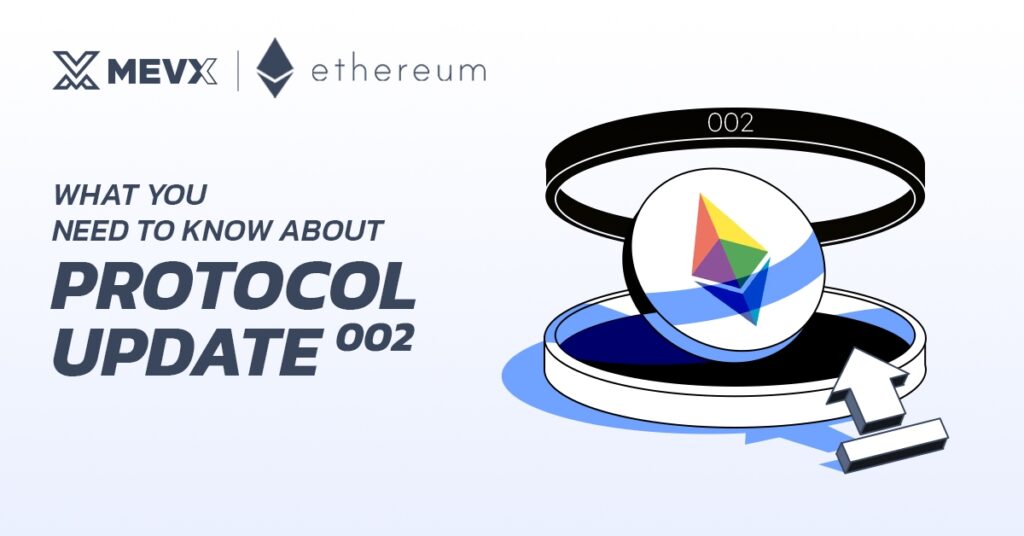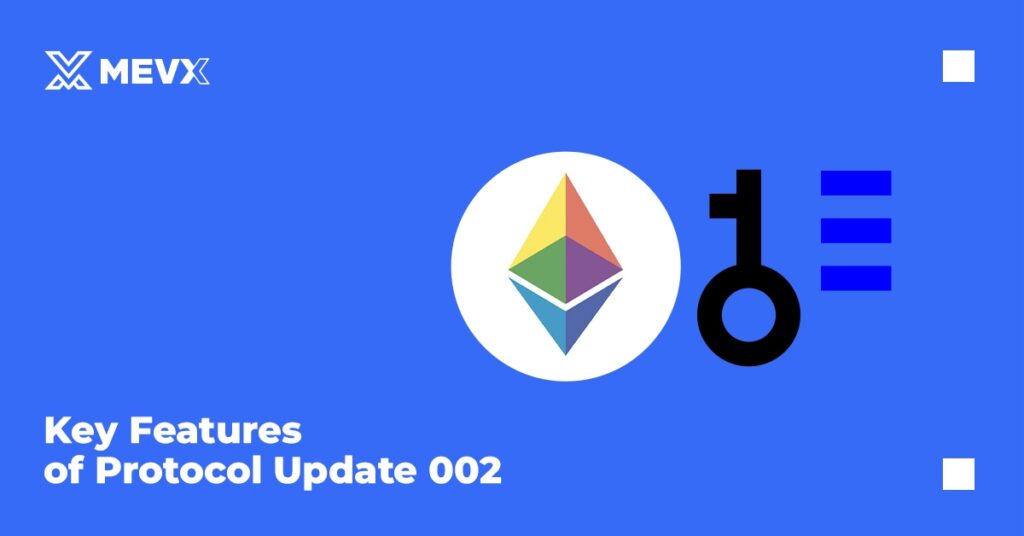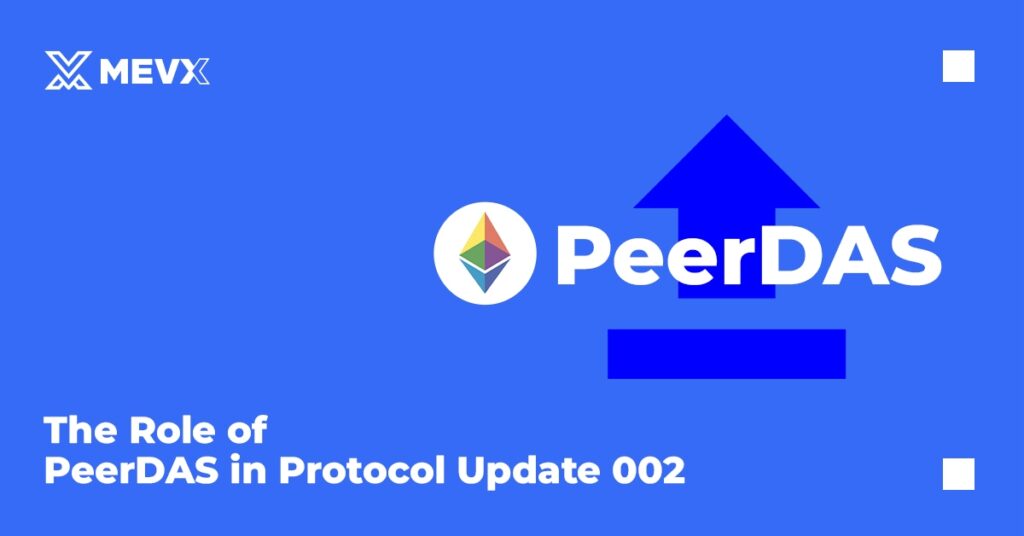What You Need to Know About Protocol Update 002
If you’ve been following the crypto space, you’ve likely heard whispers about Protocol Update 002, a pivotal step in Ethereum’s roadmap that’s set to revolutionize data handling and scalability. This article dives deep into Protocol Update 002, exploring its core components, implications, and future outlook.

Understanding Protocol Update 002: The Basics
Protocol Update 002, officially announced by the Ethereum Foundation on August 22, 2025, marks the second in a series of semiannual protocol updates designed to enhance Ethereum‘s infrastructure.
Unlike major hard forks that can disrupt the network, this update focuses on gradual, non-breaking improvements to blob data, the temporary off-chain storage mechanism introduced in earlier upgrades like Dencun.
Protocol Update 002 is about scaling blobs to support Layer 2 (L2) solutions more efficiently, enabling Ethereum to handle higher transaction volumes without compromising decentralization or security.
This update builds on Protocol Update 001 and sets the stage for upcoming forks like Fusaka and Glamsterdam. It’s not just a technical tweak; it’s a strategic move to address one of Ethereum‘s biggest challenges: data availability (DA).
With L2 rollups becoming the backbone for applications in DeFi, gaming, and AI, Protocol Update 002 ensures that Ethereum can keep up with growing demands. By increasing blob throughput, it promises cheaper transactions and faster processing, potentially boosting Ethereum’s total value locked (TVL) and user adoption.
Key Features of Protocol Update 002
What makes Protocol Update 002 stand out? The following table summarizes the standout elements that define this update:

| Feature | Description | Key Benefits |
| Blob Expansion for L2 Adoption | Increases blobs per block from 6 to up to 48, multiplying data throughput by eight times. | Reduces fees and congestion for L2 ecosystems. |
| Shift to Gradual Optimizations | Introduces Blob Parameter Only (BPO) forks for incremental capacity boosts without major disruptions. | Ensures smoother upgrades for validators and users. |
| PeerDAS Integration | Enables nodes to sample a fraction of blob data via EIP-7594, maintaining integrity. | Slashes computational loads by 50-70%. |
| Bandwidth and Mempool Enhancements | Includes cell-level messaging and mempool sharding to cut redundant transfers and ensure fair inclusion. | Improves network efficiency and preserves censorship resistance. |
| Future-Proofing with PeerDAS v2 | Lays groundwork for advanced versions in Glamsterdam, incorporating pipelining (EIP-7732). | Supports long-term scalability enhancements. |
These features collectively aim to make Ethereum more scalable and accessible, supporting diverse use cases from real-time payments to complex smart contracts.
The Role of PeerDAS in Protocol Update 002
Diving deeper, PeerDAS is arguably the star of Protocol Update 002. This innovative design allows Ethereum nodes to verify data availability by randomly sampling subsets of blobs rather than downloading everything.

Governed by EIP-7594, it ensures that even if malicious actors try to withhold data, the network can detect and mitigate issues with high probability. This is crucial as blob counts rise, preventing the need for ultra-powerful hardware that could centralize the network.
Testing for PeerDAS has been rigorous, with successful runs on devnets like Devnet-3 starting July 23, 2025. Public testnets are slated for September-October 2025, ahead of the Devconnect Buenos Aires conference.
By reducing node requirements by 50-70%, PeerDAS democratizes participation, aligning with Ethereum’s ethos of decentralization. It’s a bridge to “FullDAS”, the ultimate goal for peer-to-peer data handling that’s robust against faults and low-latency demands.
Blob Scaling Plan: From Theory to Implementation
The blob scaling strategy in Protocol Update 002 is methodical. Starting from the current ~64 KB/s throughput, the plan targets ~512 KB/s through phased increases. Fusaka, expected in early November 2025 (or possibly December), will fully activate PeerDAS, while BPO forks handle interim boosts via EIP-7892.
Bandwidth optimizations, led by developers like Raúl Kripalani and Marco Munizaga, introduce smarter messaging to free up resources. Meanwhile, mempool sharding, researched by Csaba Kiraly, safeguards against censorship as data volumes grow. Looking ahead, PeerDAS v2 in Glamsterdam (mid-2026) will add EIP-7732 for pipelining, further refining block times and reconstruction techniques.
This plan isn’t without challenges. Tight timelines could delay testing, impacting market sentiment. However, the Ethereum community’s collaborative spirit, evident in ongoing research on robust distributed arrays, positions Protocol Update 002 as a solid foundation for “The Surge” phase in Ethereum’s roadmap.
Timelines, Impacts, and What’s Next
The implementation timelines for Protocol Update 002 are aggressive yet achievable. The table below outlines the key milestones:
| Upgrade | Projected Timeline | Main Content |
| Fusaka | Early November 2025 (or possibly December) | Introduces PeerDAS (EIP-7594), increases blobs to 48 per block. Devnet testing complete; testnets in September-October 2025. |
| Glamsterdam | Mid-2026 | PeerDAS v2 with EIP-7732 (pipelining) and advanced network optimizations. |
| BPO Forks | Between major upgrades (starting post-Fusaka) | Gradual blob increases, potentially multiple steps in client releases. |
Client teams like Geth and Nethermind are preparing under the lead such as Barnabas Busa. The update could propel Ethereum‘s transactions per second (TPS) to 12,000 by 2026, mainly via L2, outpacing rivals like Solana in scalability while upholding core values.
The broader impact? Lower gas fees, enhanced DeFi liquidity, and new opportunities in encrypted rollups. For investors, it signals Ethereum‘s resilience; for developers, it’s a toolkit for building scalable dApps.
In conclusion, Protocol Update 002 isn’t just an incremental patch scalable era. As blockchain technology matures, staying informed on such updates is key.
For more insights into Ethereum‘s evolution and other crypto trends, follow our MevX blog today and never miss a beat!
source https://blog.mevx.io/ethereum/what-to-know-about-protocol-update-002
Comments
Post a Comment